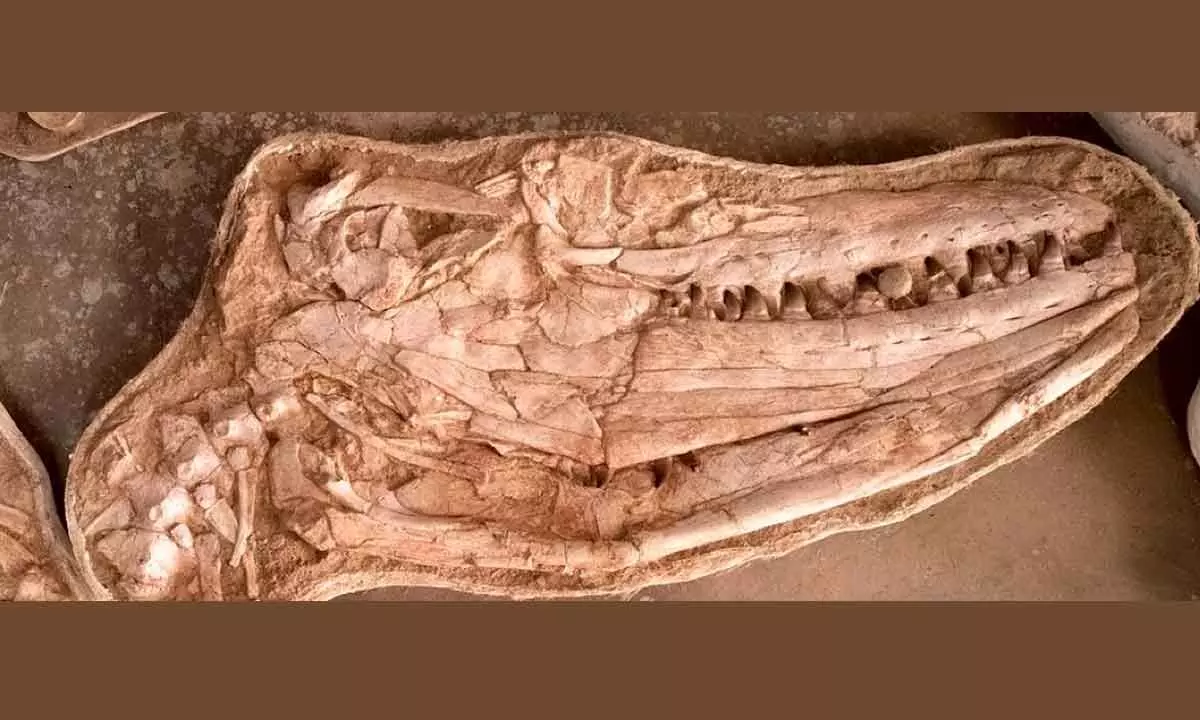Fossils Of A Giant Lizard Discovered Who Ruled The Sea

One of the Thalassotitan skulls
- Amazing fossils of a large marine lizard have been found, providing insight into how this extinct animal would have ruled the water 66 million years ago.
- The fossils were found in Morocco's phosphate fossil beds, which are home to a wide variety of exceptionally well-preserved Cretaceous and Miocene fossils.
Amazing fossils of a large marine lizard have been found, providing insight into how this extinct animal would have ruled the water 66 million years ago. The fossils are a new species of mosasaur, which is a type of enormous marine reptile that prowled the seas in the Late Cretaceous.
Thalassotitan atrox is the name of this formidable creature, and wear on its teeth and other bones discovered at its excavation site reveal that it was no gentle giant; instead, it dined on challenging prey like sea turtles, plesiosaurs, and other mosasaurs. Other mosasaurs hunted smaller prey, such as fish or ammonites, however these creatures weren't necessarily that small.
This indicates that Thalassotitan most likely held a position at the top of the food chain, maintaining ecosystems by managing the other predators.
The largest reptiles alive today are dwarfed by mosasaurs, which could grow to lengths of up to 12 metres (40 feet), or twice the size of the crocodilians, the largest living reptiles. However, mosasaurs are distantly related to modern snakes and iguanas. The marine iguanas of the Galapagos were not as well suited to a wholly aquatic lifestyle as the dinosaurs. They had a reptile skull, but their feet were flippers rather than claws, and their tail had shark-like fins.
Given their various teeth, many mosasaur species might also specialise in various types of prey. For fish and squid, some teeth were small and spiky; for shelled animals, others had blunter teeth and crushing jaws.
The animals were probably more predators than scavengers, though, as they didn't appear to have a keen sense of smell. According to analyses, mosasaurs dined on fish, cephalopods, turtles, molluscs, other mosasaurs, birds, mollusks, and fish. It appears that Thalassotitan was among the most aggressive. The fossils were found in Morocco's phosphate fossil beds, which are home to a wide variety of exceptionally well-preserved Cretaceous and Miocene fossils.
The relics include vertebrae, limb bones, phalanges, and skulls. Together, these allowed for a comprehensive description of Thalassotitan's skeleton, shoulders, forelimb, and jaw. Longrich and his team discovered that the animal might perhaps grow to a length of 9 to 10 metres, making it slightly bigger than an orca. Its skull was about twice as long as the orca's, at about 1.5 metres.
As evidence, consider the bones of huge predatory fish, a sea turtle shell, a plesiosaur head, and at least three different mosasaur species that were discovered close to the Thalassotitan remains. All of these remains exhibit acid wear, as one may anticipate would happen in the digestive acids in a big beast's stomach before being regurgitated back out. The researchers point out that this is only circumstantial evidence, but it's still quite intriguing.
Meanwhile, Mosasaurs evolved throughout the course of the last 25 million years of the Cretaceous, becoming more and more specialised and varied. Thalassotitan's discovery indicates that mosasaurs were more varied than previously assumed, and that their ecology was healthy and vibrant with a wide enough variety of prey to support this range of predators.
Next Story
















